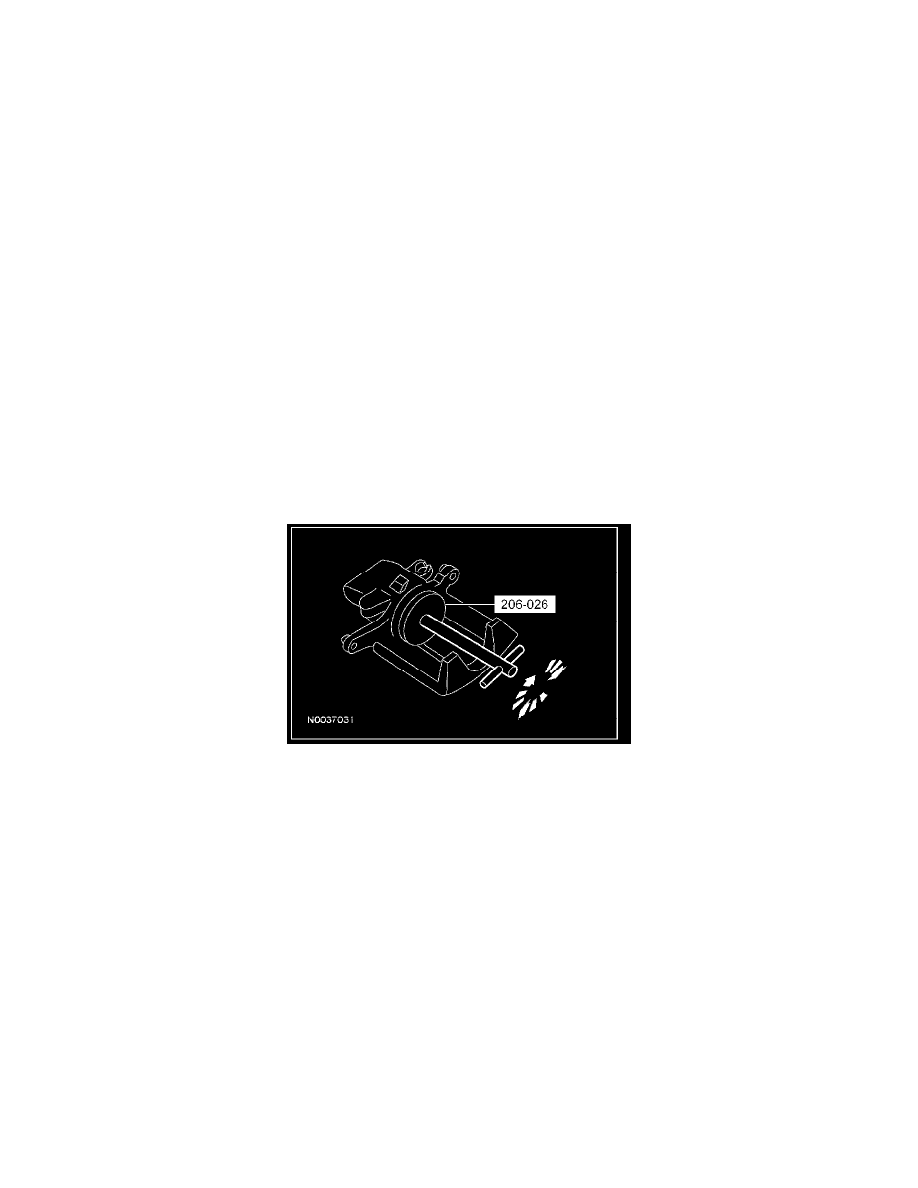MKZ AWD V6-3.5L (2008)

CAUTION: Brake fluid is harmful to painted and plastic surfaces. If brake fluid is spilled onto a painted or plastic surface, immediately wash
it with water.
1. Check the brake fluid level in the brake master cylinder reservoir.
^
If required, remove the fluid until the brake master cylinder reservoir is 1/2 full.
2. Remove the wheel and tire.
3. Disconnect the parking brake cable from the brake caliper.
^
Pull back the parking brake lever.
^
Disconnect the cable from the parking brake lever.
^
Remove the cable conduit retaining clip.
^
Disconnect the cable from the brake caliper.
4. CAUTION: Do not pry in the caliper sight hole to retract the pistons, as this can damage the pistons and boots.
CAUTION: Do not allow the brake caliper to hang from the brake hose or damage to the hose can occur.
Remove the 2 brake caliper guide pin bolts and position the caliper aside.
^
Support the caliper using mechanic's wire.
5. Remove the 2 brake pads, shims and retraction clips. Inspect the brake pads and shims for wear, damage or contamination.
^
Discard the slide clips.
^
Inspect the brake pads for wear and contamination.
Installation
1. NOTE: Make sure the caliper piston boot is clean and free of foreign material.
Using the special tool, compress the brake caliper piston into the brake caliper bore.
2. Position the notch in the caliper piston so that it will correctly align with the pin on the backside of the inboard brake pad.
